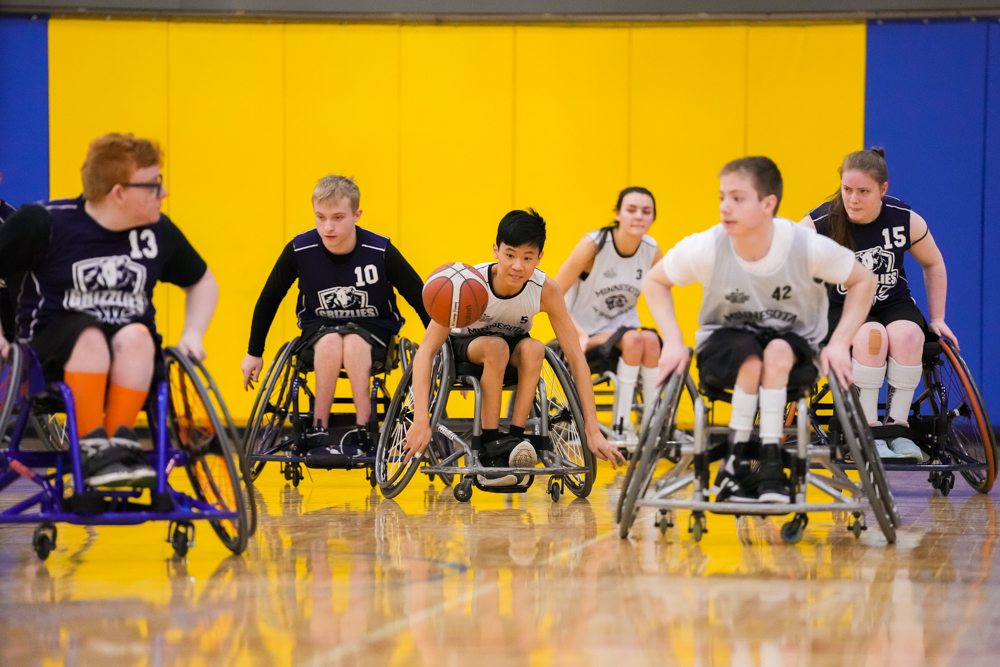We understand that mindfulness for athletes and performers is easier said than done, but there’s a ton of research behind the benefits of mindfulness and its link to increased athletic ability, performance readiness and overall success.
Mindfulness can improve self-esteem and resilience, general stress, get better sleep and improve mental clarity and concentration. Everyone can practice mindfulness, no matter their shape, size, fitness level or ability status.

Mindfulness Reflection Activity
Gather together and have participants answer one, some or all of the questions below in large or small groups. You can also do this activity by yourself or with a partner. Once they have responded to the question(s), engage in a brief discussion around their answers, or reflect on your answers if you are doing this activity yourself.
- What are three reasons you like being an athlete or performer?
- What is the best part about competing?
- What emotions do you feel when you play or perform well?
- How would you describe what feeling confident is like?
- How does being a performer or athlete make you a better person?
- What is the one thing you do after a good game or performance?
- What do you do to calm your butterflies while you compete or perform?
- What do you do to help you focus before a game, meet or performance?
- Do you use visual cues of your environment to help you focus? What are they?
- What do you give up to play sports or participate in your chosen activity?
- What do you do to stay calm under pressure?
- Do you have a mantra? What is it?
- Do you think attitude is a factor in winning or performing well? Why?
- How does being an athlete or performer inspire you to do good?
- How does being an athlete or performer make you a better student?
Mindfulness Training Practice for Athletes & Performers
Athletes and performers can tackle each training practice – either at once or periodically throughout the season. Check in with team members or other performers regularly to get a pulse on how they are doing with their practices.
Write down your goals
Do you have a goal for your mental health? A goal for your mindfulness practice? For your athletic or activity performance?
Go “old school” and write down your mental, physical, emotional, spiritual, academic and athletic goals! Putting pen to paper helps get these thoughts out of your head, and research shows that you’re more likely to follow through with these goals when you’ve written them down.
Practice positive self-talk
As a team or as an individual, commit to using instructional or positive self-talk rather than self-defeating talk.
| Examples of Self-Defeating Talk | Examples of Instructional/Positive Talk |
| I can’t make that shot. | I’ve been training. I can make the shot. |
| I won’t be able to run that fast. | I am strong and fast. |
| I’m not motivated. | What song would really pump me up right now? |
| I’m not good enough to make the team/cast/choir/band. | I am enough and I am talented. |
| I’ll just let everyone down. | I am more than this goal. I will do the best I can. |
| I can’t do that solo. | I’ve been practicing for the solo and I know I can do it. |
It’s just as important to pay attention to your internal dialogue and the stories you tell yourself, your friends, and your family. This is because your internal dialogue can reflect and shape your mental state. It’s OK to notice critical thoughts or feelings when they come up, but try not to take them with you to the next game or performance.
Mentally practice like you physically practice
As a participant in a performance-based activity, you spend countless hours training your physical body to perform (e.g., working out, practicing speech, singing, dancing). Now that you know the importance of your mental state, reflect on how much time you spend training your brain.
Start small with mini check-ins throughout the day. Ask your mind to check in with your body. How is your body feeling? How is your mind feeling? Are there emotions present?
Guided Imagery for Athletes & Performers
Mindful Movement for Athletes & Performers
Seated pigeon – improves mobility
Cobra – releases pressure on the spine.
Dolphin – stretches the upper back and shoulders, hamstrings, calves and foot arches simultaneously.
Frog – improves the strength of connective tissue around the ankles and knees, making it a great warm-up movement before lower-body exercises.
Supported Backbends – they very lightly stretch tight spots while giving athletes a chance for deep relaxation, which speeds up recovery.
Fish
Bridge
Reclined Big Toe – strengthens the knees and can target the IT band (a common tight spot in runners) and can relieve backaches and sciatic pain. Using a band/strap makes it accessible for everyone.
Boat Pose – increases abdominal and hip flexor strength.
Bow Pose – stretches the front of the body, improves posture and strengthens the back muscles.










 Pinterest
Pinterest  Instagram
Instagram 

